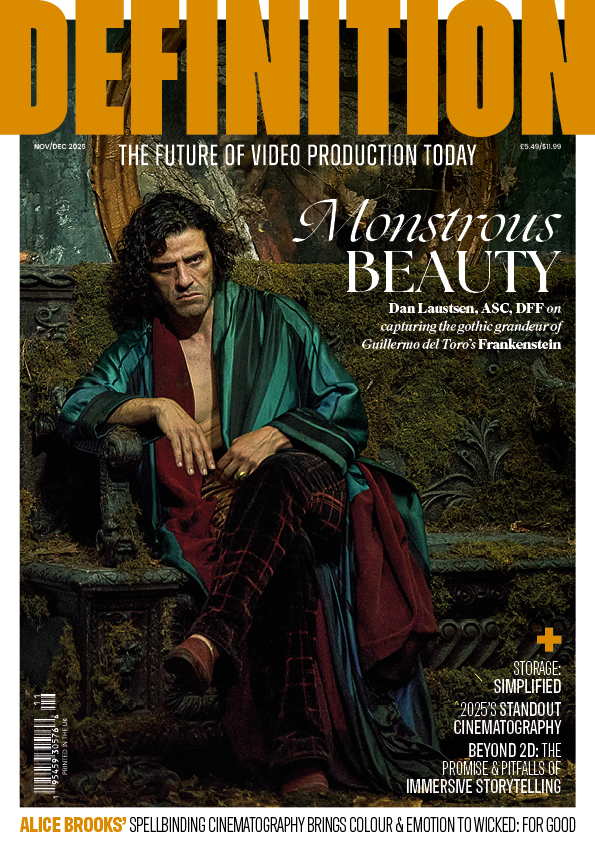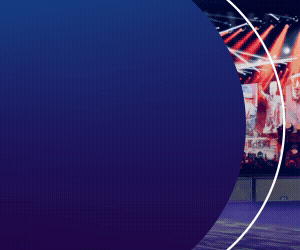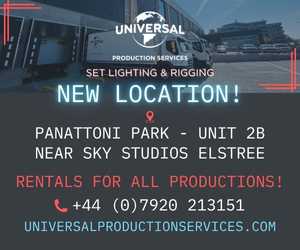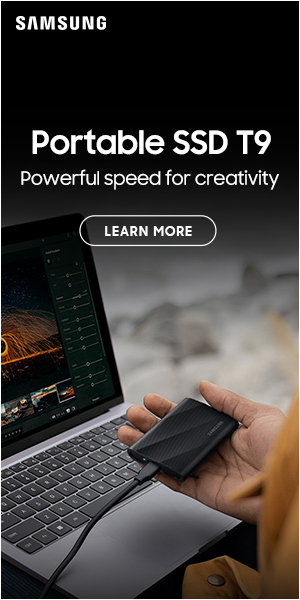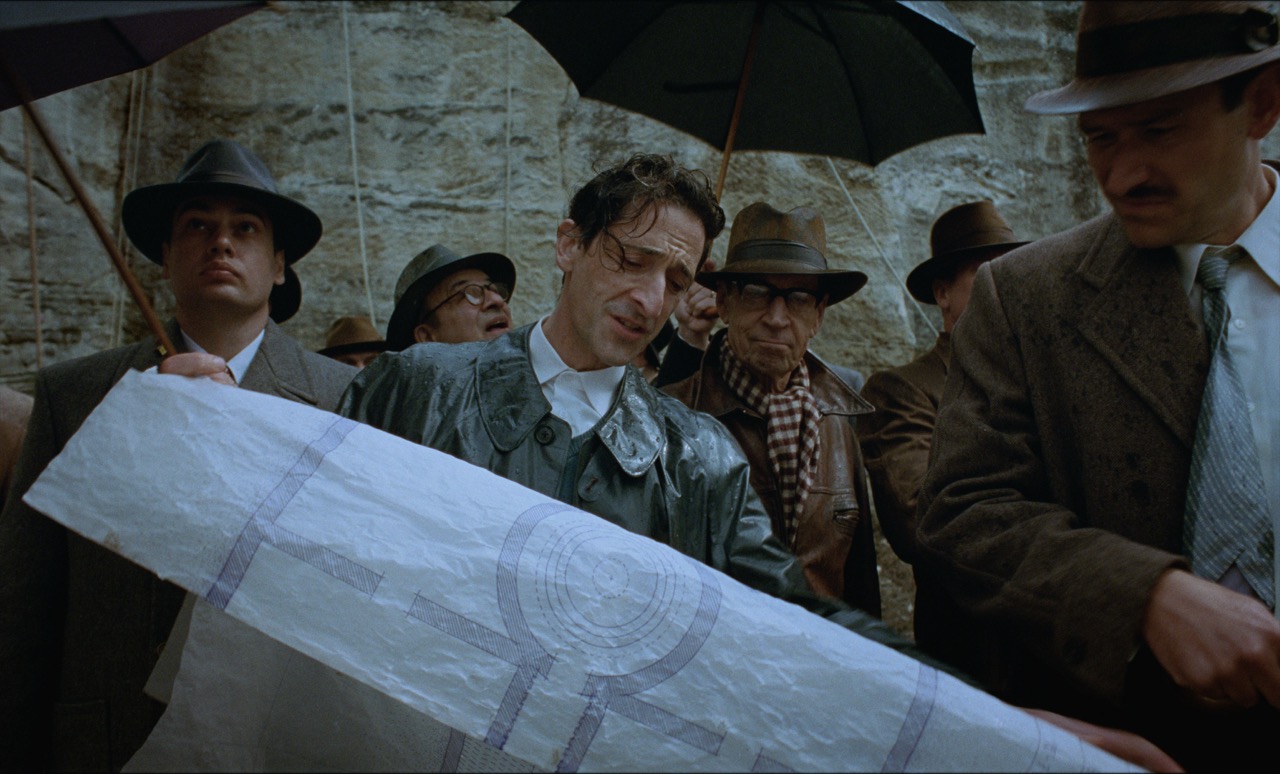
The Brutalist
Posted on Jan 3, 2025 by Admin
The hard core of beauty
Nicola Foley sits down with DOP Lol Crawley, BSC to break down the monumental beauty of The Brutalist
Words Nicola Doley | Images 2024 Paramount Pictures
Directed by Brady Corbet and starring Adrien Brody, The Brutalist is an ambitious film in every respect. Stretching out over more than three and a half hours, it spans three decades in the life of László Tóth, a Holocaust survivor and visionary architect, as he toils away at the greatest project of his life. The fictional Tóth is an early proponent of what we now call brutalism: an architectural style characterised by its monumental concrete forms and striking geometry.
Capturing the essence of brutalism – its weight, scale and imposing beauty – was a key challenge for DOP Lol Crawley, BSC, whose previous credits include Ballast (2008), Four Lions (2010) and Mandela: Long Walk to Freedom (2013). “Architecture is inherently static, but film is a medium of movement,” he contemplates. “So the first question we needed to answer was: how can we express the experience of these spaces, how people move through them and how light interacts with them?”
One of the solutions was to shoot on VistaVision, a large format film system with a native aspect ratio of 1.5:1 that Crawley describes as ‘almost like a big slab of celluloid’. This choice allowed for a wider field of view, but without the distortion that you’d get with ultra-wide lenses. “It’s a beautiful tool for capturing the architecture and landscape in as true a form as possible, without aberration,” suggests Crawley.
“The allegations might be that it’s sort of gimmicky – an affectation,” he acknowledges. “But I felt from the beginning that VistaVision had earned its place. Brady wanted to tell a story that takes place mostly in the fifties, so he wanted that correlation, and it’s also just the perfect camera system for capturing what we were hoping to.”

Foundations
The Brutalist is Corbet and Crawley’s third collaboration, with the pair previously having teamed up on Childhood of a Leader (2015) and Vox Lux (2018). “The night we wrapped on Vox Lux, Brady presented me with a book on brutalist architecture and said: this will be the next project,” recalls Crawley.
“So I knew that one of the main themes would be brutalist architecture, but there’s so much more going on in this movie. Brady’s a filmmaker who always takes big swings, in both the execution and themes of his films.
“When you get into cinematography, you hope to work on films that are close to your heart. Films that are a big event at the cinema, which you can see and then have a discussion about afterwards,” he adds. “I’m really lucky that Brady invited me to be part of these kinds of movies.” The key to their partnership, Crawley explains, is their shared sensibilities and tastes, which make for an efficient and intuitive dynamic on-set.
That’s all the more vital on a film like The Brutalist, which, for all its sweeping ambition, was shot in just 33 days with a budget of less than $10m. “You have to find a way of working that allows you to achieve these things. One way we do that is by shooting less coverage than a lot of other directors and cinematographers do. That’s evident in the film, which has lots of long Steadicam shots and handheld sequences.
“My job as a cinematographer in creating those scenes is to really light the space, which is something that the great Harris Savides used to talk about a lot. Lighting the space and letting the actors have free rein.”
For the most part, the director and DOP duo won’t exhaustively storyboard, unless there’s a lot of SFX or stunt work in a particular sequence. “We’re kind of old school in the sense that, while we’re very prepared, we don’t necessarily shot list every single scene – we want to respond to the space and the performances.”
The danger with over shot listing and storyboarding, says Crawley, is that it can make you too rigid; too focused on the blueprint rather than what’s unfolding in front of you.
“Christopher Doyle, who is a cinematographer that I greatly admire, says that in western cinema it’s ‘here’s the frame, how do you fill it’, whereas in Asian cinema, you say ‘here’s the world, how do I frame it?’ – I’ve always been of the latter persuasion.
“I like the idea of the accidental; letting life in. Hopefully that life comes through in Brady’s films. Filmmaking is an alchemy, and that’s especially true when you’re shooting on film,” he continues. “When you process film, it goes away and then comes back, so there’s always a slight element of surprise. It’s incredibly alchemical, and we try to embrace it.”
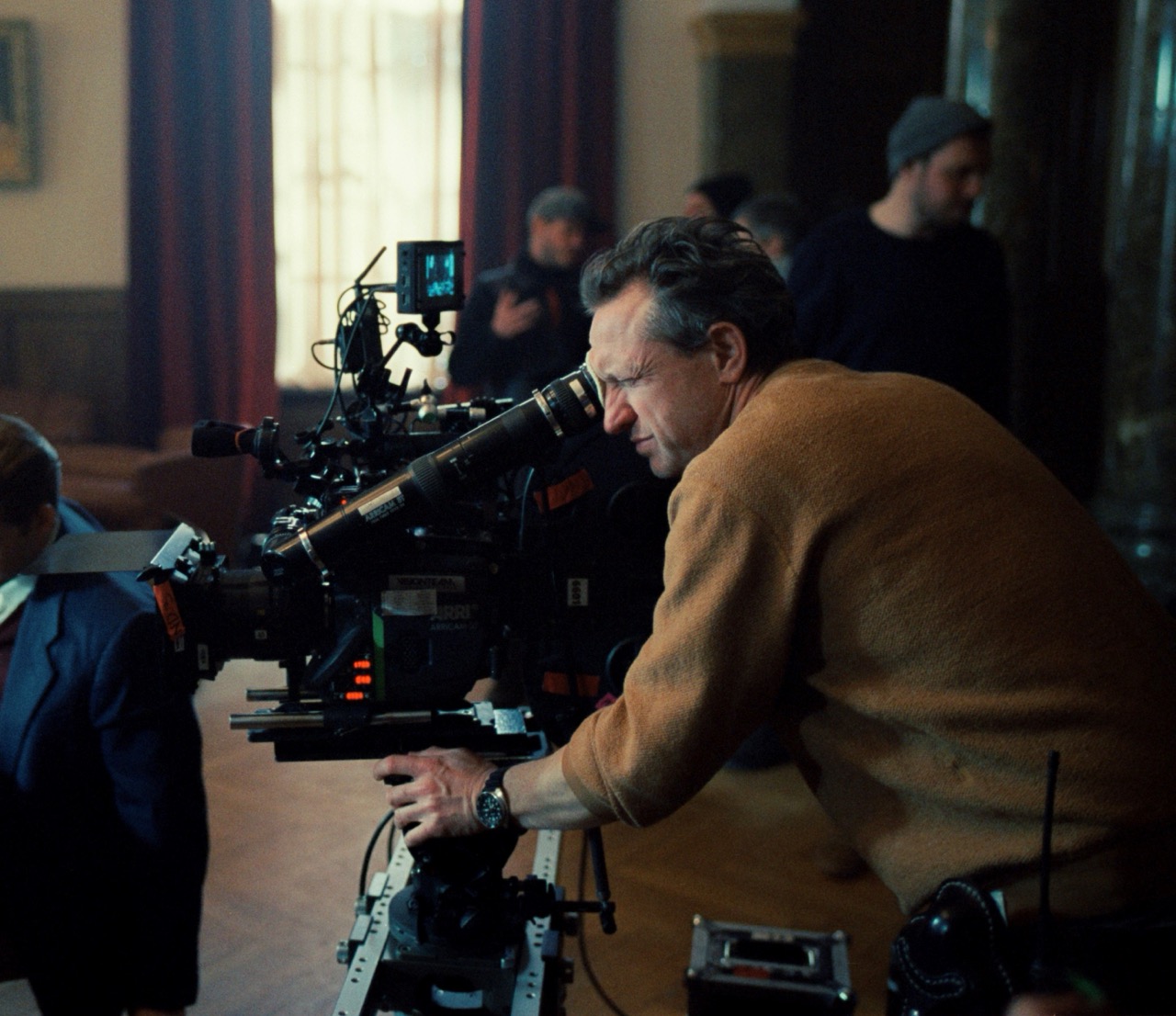
Intimacy & transcendence
The Brutalist’s plot follows Tóth as he and his wife emigrate to the US in the aftermath of World War II. After a library he designs for Harrison Lee Van Buren (Guy Pearce) earns him acclaim, the wealthy industrialist commissions him to build a grand community centre in honour of his late mother.
As the great structure takes shape, Tóth faces professional and personal battles; the film mapping the traumas and triumphs of his life while his masterwork comes to fruition.
Like brutalism itself, “the film’s photography strikes a balance between minimalism and maximalism,” Crawley sums up. “It’s that balance between the absolute intimacy of human connection and the grandeur of Tóth’s work. The examination of that.”
The intense, intimate moments – often captured handheld for a sense of immediacy and rawness – are contrasted with moments of release. “There’s this motif of emerging from the bowels of the earth through to the transcendence of light,” elaborates Crawley. “We see it on the ship, in the brothel and in the party scene in the mine in Italy.
“It’s like we’re descending into hell, down this long tunnel, followed by a handheld, Fellini-esque dance sequence. We show these moments of liberation and an ascent; the characters in some way reaching for the light.”
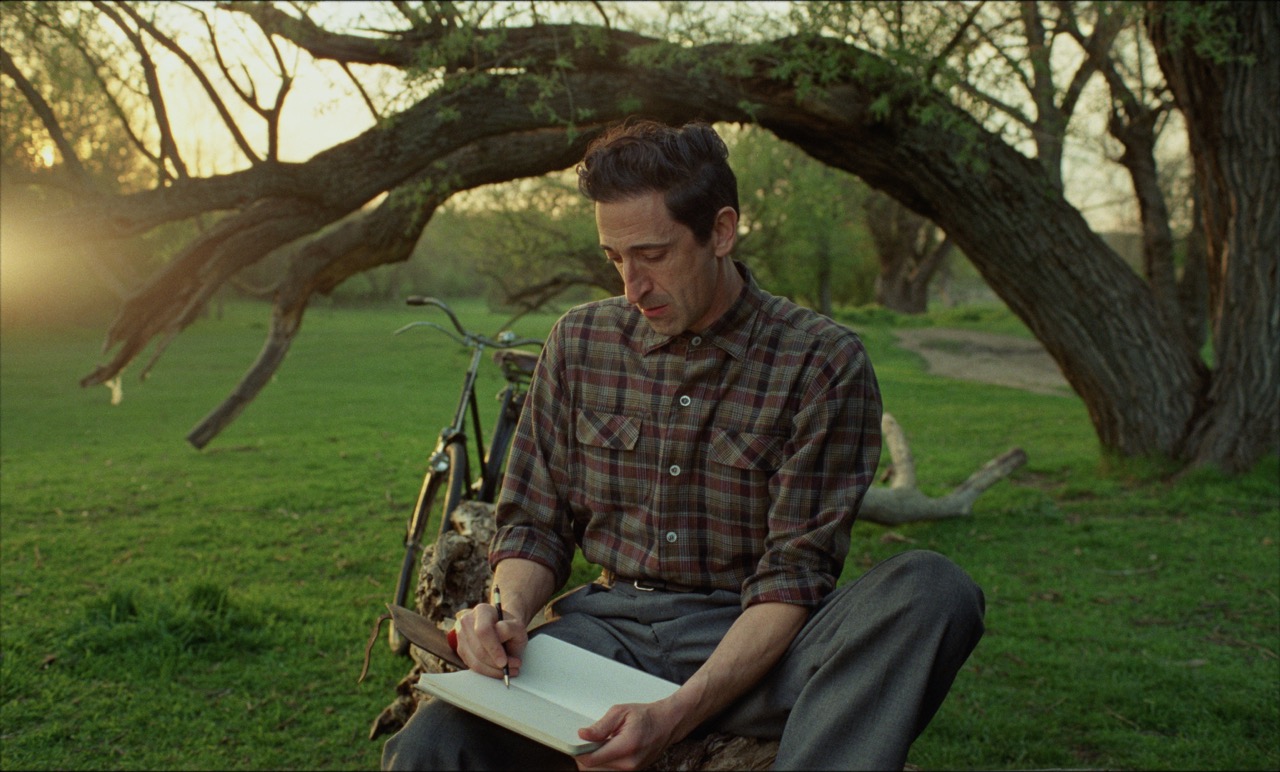
Cementing the vision
The decision to shoot on VistaVision was a bold one, and it came with its fair share of headaches for the team. Popular in the fifties, the system isn’t exactly designed for modern workflows, which might explain why The Brutalist is the first feature film to use it in nearly 30 years. In its time, though, it was groundbreaking. Unlike traditional 35mm film, VistaVision runs the film through the camera horizontally, with a significantly larger negative that delivers vastly superior resolution and detail. During its heyday, it was used on classic films like Hitchcock’s Vertigo and North By Northwest before eventually falling out of favour, usurped by less pricey, more practical systems like CinemaScope and 70mm.
While Crawley embraced VistaVision’s ability to capture expansive, visually striking scenes, it created several challenges. “Brady wanted to put the VistaVision camera on a Steadicam,” Crawley recalls with a laugh. “That was a whole ordeal. We had to send the camera assistants to London for a deep prep just to make it workable.” Balancing the camera was also tricky. “Because the film runs horizontally, the weight shifts dramatically as it spools from one side to the other. It’s not as heavy as IMAX, but the principle is the same.”
For certain scenes – like an early boat sequence – a smaller, lightweight 35mm ARRI camera was deployed to avoid any mishaps on the steep steps, while for more intimate and experimental moments, Crawley utilised an ARRIFLEX 435 camera from Lester Dunton with a mistimed shutter to create a distinctive ‘smeared’ effect in the highlights. This technique contributed to the dreamlike, almost hallucinatory quality of the heroin use sequences. Other cameras in the mix included an ARRICAM LT and ST with 16mm footage to achieve different textures and effects.
With this motley line-up of tools, Crawley was mindful of not allowing the aesthetic to become too ‘scrappy and uncrafted’, wanting the patchwork quality to come across as intentional rather than chaotic. Keeping the final result cohesive was a top priority.
To create the desired look, the team also leaned heavily on underexposing the negative and push processing the film. “It’s definitely not the safest option,” Crawley admits, “because you’re taking the film somewhere it doesn’t want to go, distressing it to create this impressionistic, almost painterly quality. Producers and labs get nervous about it, but when it works the results are incredible.”
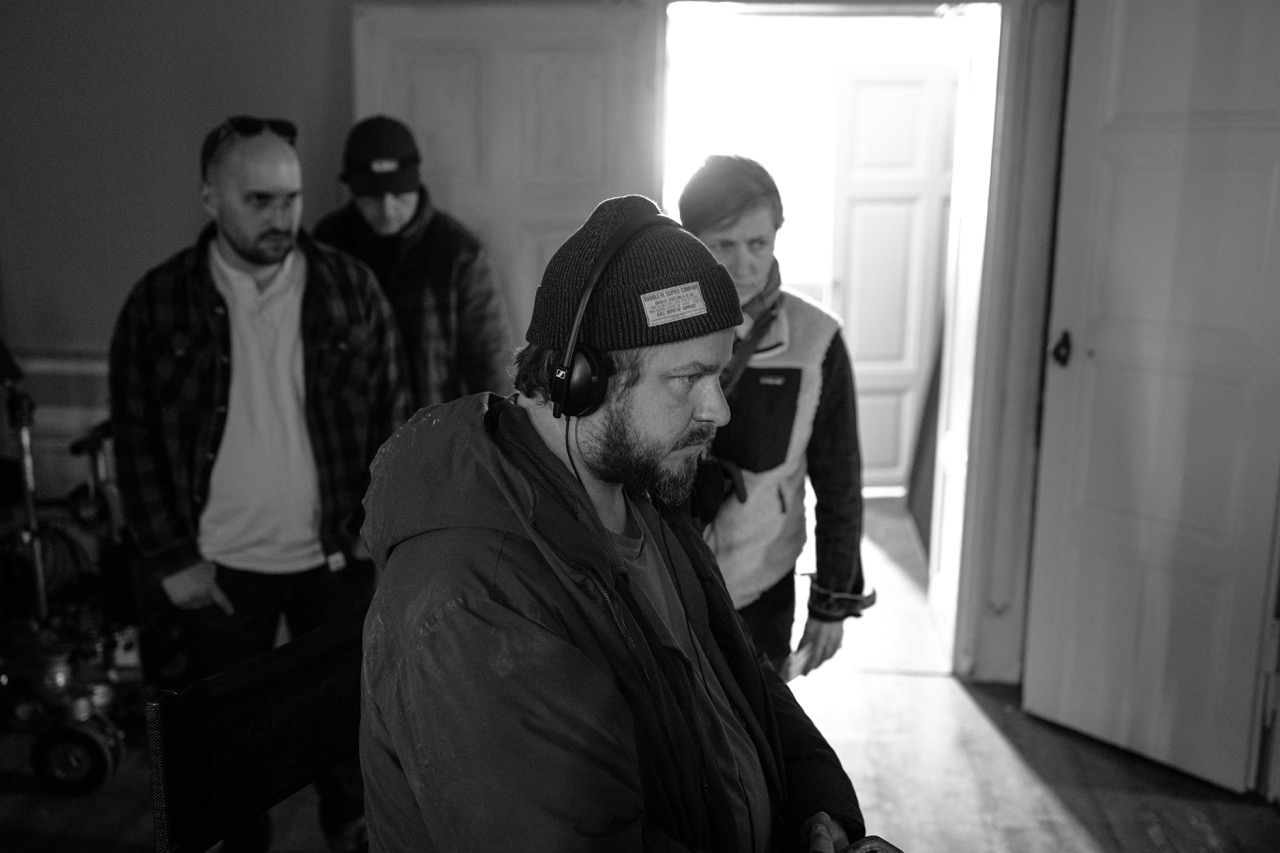
Lens language
Crawley’s lens choices were key, and the DOP found himself returning once again to Cooke S4s, which he and Corbet have used on previous collaborations. “There’s a warmth and texture in the Cooke Look that’s hard to beat,” he admits. “They’re not the most pristine lenses – but that’s exactly why we love them. They have this beautiful fall-off and slight aberration that makes images feel more human.”
The philosophy behind this choice traces back to Crawley’s love of the pictorialist movement. This concept is “all about making photography more impressionistic and more painterly,” he comments. “That’s the spirit we wanted for this film. If you use the most pristine, scientifically accurate lenses, you lose that sense of history, that impression of a particular time period.”
For the VistaVision sequences, meanwhile, they used Leica R lenses. The camera dictated the lenses in this case, but the team were “extremely happy with them,” enthuses Crawley. “They’re rehoused Leica still lenses; you can’t get much better than that in terms of glass.”
Reflecting on the completed film, which is currently generating an almighty awards buzz, Crawley ends the interview by ruminating on the importance of staying true to the types of projects and collaborators that resonate with him, instead of chasing trends. “I know where I do my best work. This experience has reaffirmed how important it is to trust my instincts,” he says. “There are certain types of films and aesthetics that I believe to be true to me, but I think that as soon as you start trying to pre-empt stuff and strategically navigate your way through it, you’re trying to shoot a moving target, and it’ll go wrong. As Chris Doyle said: it has to be all about the heart.
“Whatever that thing is, whatever allows you to do what you do. If you stay true to that, whatever it might be – as esoteric as that might sound – I think that’s the most important thing.”
This story appears in the January 2025 issue of Definition




